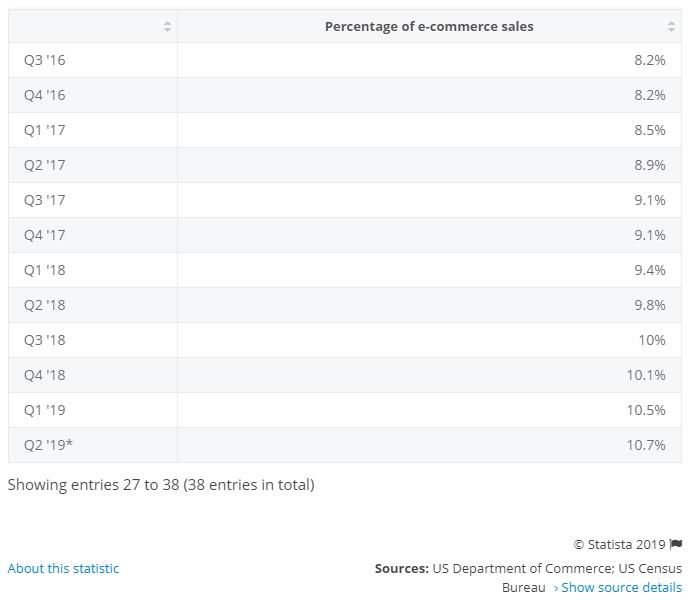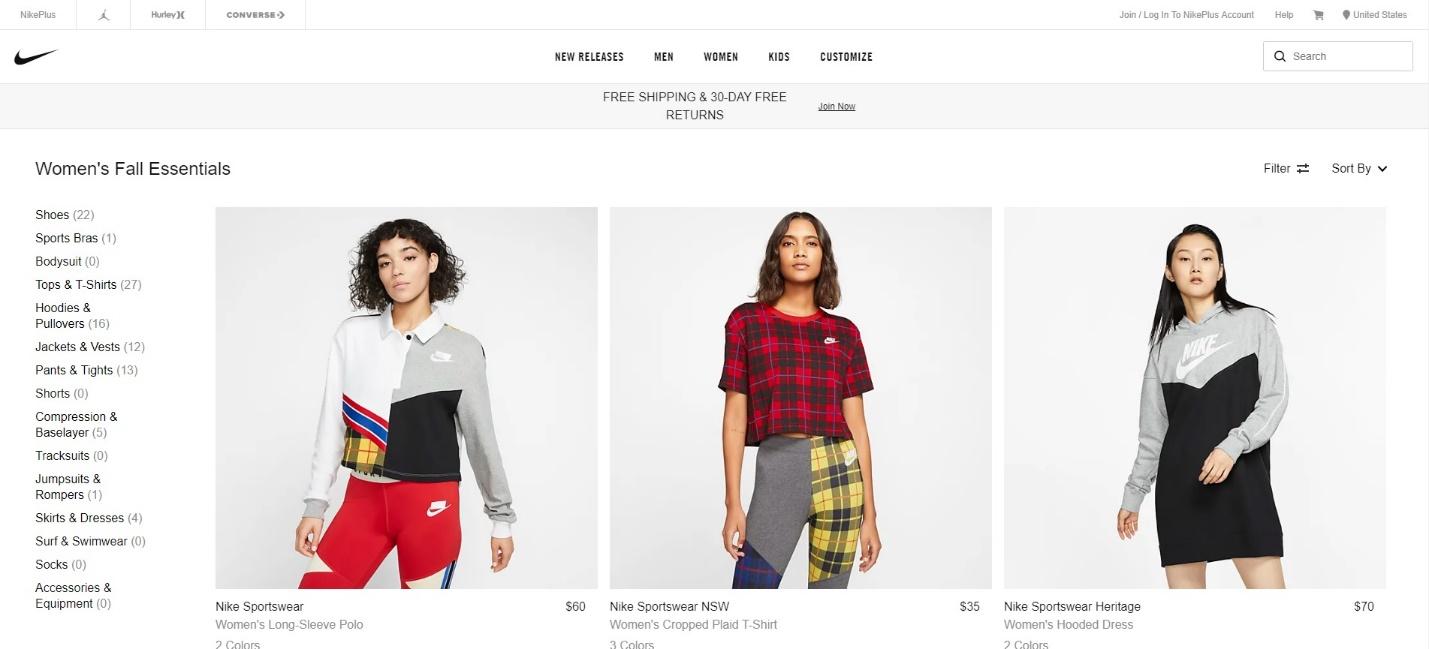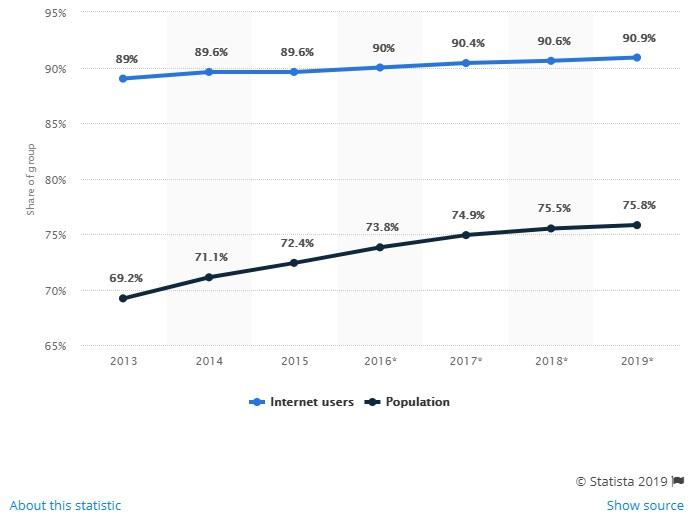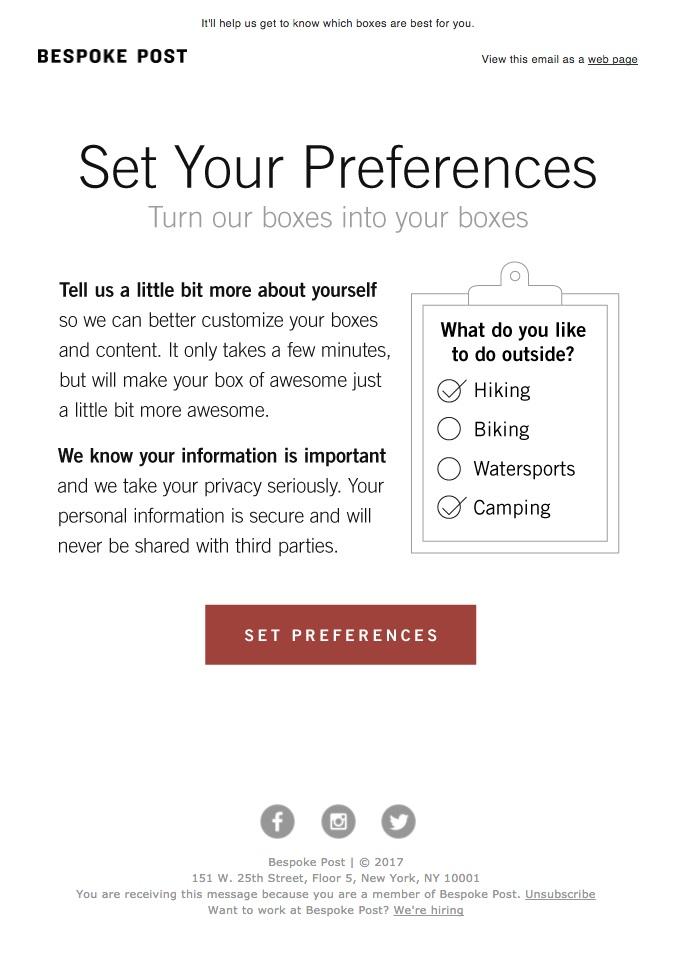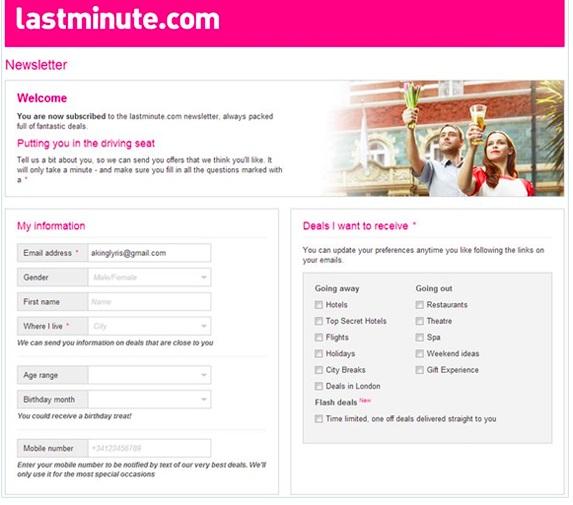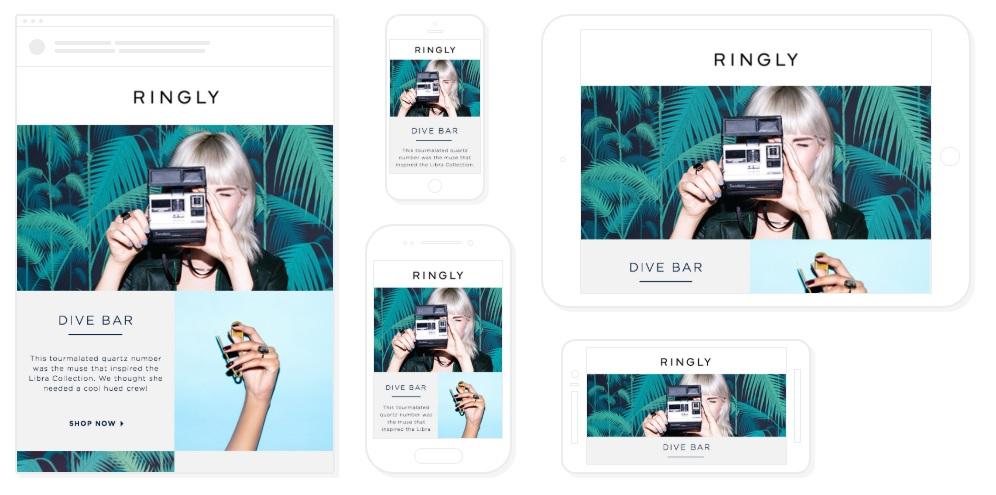How to craft a B2C email marketing strategy that hits your goals
Are you a business-to-consumer (B2C) industry looking to revitalize your email marketing strategy? You’re in the right place. When it comes to building a B2C email marketing strategy, you should keep several things in mind (like the fact that you are speaking directly to your consumers).
In this guide, we’ll discuss not only the varying B2C business models for digital marketing but also how you can tailor these models to your email marketing strategy to best reach your targeted audience.
Let’s get started.
Understanding the 5 basic B2C business models
In the second quarter of 2019, retail eCommerce sales in the U.S. amounted to nearly $146.2 billion. That’s more than 10% of all eCommerce retail sales in the U.S.
Source: Statista
With online sales continuing to rise, it’s more important than ever for B2C marketing teams to build an online presence and a strong email marketing strategy.
To create a strategy that will net the results you’re looking for, you must first understand the five basic B2C digital business models.
1. Direct sellers
The most common B2C business model is known as the direct seller’s model. In this model, retailers use their online stores to offer goods to consumers, making it easy to order products from the comfort of their home.
Source: Nike
2. Online intermediaries
These are online shops or service providers that don’t own any product, but instead work as a “go-between” and put buyers and sellers together. The travel industry is ripe with these business models—think: Trivago and Expedia. They don’t actually own the hotels listed, they help shoppers find the best deals for their individual needs.
3. Community-based
These are shops found on popular social media websites, including Facebook. Through this model, you could reach your customer base through social media marketing, not necessarily selling anything (like in Facebook Marketplace). This leads people to either your email newsletter sign-up or your brand’s website to make the conversion from viewer to consumer.
4. Fee-based
Fee-based models are sites that require a payment to access gated content. Businesses such as Sling, Direct TV, and Netflix all offer premium content to viewers looking for an alternative to traditional cable. They may offer a free trial, but after that promotional period ends consumers eventually pay a monthly fee to continue with their access.
Source: Netflix
5. Advertising-based B2C
The fifth B2C business model is advertising-based. This model uses free content to draw the interest of your target audience to either your website or email sign-up form. This is where the meat of many B2C email marketing strategies begin. Why? Because people want to know your value before they purchase. Free content is often the best way to showcase your expertise—to show people you have the answers they seek. Now, how do you get this free content to your target audience? Email marketing.
Why B2C marketers need email marketing
Building or revamping your B2C email marketing strategy is essential for several reasons. First, it’s the king of ROI, bringing in an average of $38 for every $1 spent, Second, it’s the number one method of communication your consumers prefer when it comes to receiving your promotional and educational content.
Think about it: The number of those in the U.S. with internet using email monthly is projected to grow to 90.9% in 2019. That doesn’t even account for the total number of people using it daily.
Source: Statista
You can see how important it is to have an email marketing strategy set up and running so you can reach these potential audience members.
The point of email marketing is to reach your audience where they are hanging out the most. Some marketers will tell you that social media is where consumers are (and that may be valid for some), but the data speaks differently: 72% of people prefer to receive promotional content through email, while only 17% prefer to receive them through social media.
3 best practices you need in your B2C email marketing strategy
It’s almost 2020, which means most B2C marketing teams have an email marketing strategy of some sort. So instead of walking you through the steps of creating a B2C email marketing strategy, let’s talk about revamping your current strategy.
What sets B2C and B2B email marketing strategies apart? B2C relies on personalized messages tailored to the needs of each of their readers (yes, personalization is vital to any email marketing strategy). B2C speaks directly to consumers, requiring you to know each of them in order to supply them with highly personalized product suggestions.
Take this example from pet retailer Chewy.
Source: Really Good Emails
Chewy takes time to create email messages specifically tailored to each reader’s needs. They personalize product recommendations based on a user’s previous purchase history.
So, how can you provide the most to your consumers through email marketing? By keeping the following B2C email marketing best practices in mind during your strategy revamp.
1. Collect the right data from the start
To provide relevant content to your subscribers, you’ll need the right information. This is a simplest practice for your marketing team to adopt, and will yield you some of the highest return.
When your users sign up for your email newsletters and offers, make sure you get to know them. This can be as easy as asking users to pick their varying interests during the sign-up process. If you were selling shoes, your initial sign-up form could look something like this:
-
Name
-
Email
-
Favorite shoe style:
-
Athletic
-
Casual
-
Professional
-
Dressy
-
If you’re not sure you want to ask for personal information right off the bat, then consider including a preference update email in your initial welcome email series.
Source: Really Good Emails
If your brand is a little more advanced and has the necessary resources, then consider developing a user preference center. This is a landing page on your website that allows your readers to get detailed with their preferences, ensuring you have everything you need to send the most relevant information to each individual.
Source: Campaign Monitor
2. Optimize for mobile devices
In the United States alone, nearly 96% of the population owns a cell phone of some sort, and 81% of them own a smartphone. The days when people took an hour to sit at their desktop and check their inbox may be gone.
These numbers prove that marketing teams should focus on mobile-friendly and responsive email designs, rather than designs for the desktop. These are easier to achieve than you may think—if you have a quality email marketing tool at your disposal.
Source: Campaign Monitor
Many marketing tools supply you with customizable responsive templates, doing all the hard work for you. Your job boils down to dragging-and-dropping your different email components where you want them. If you are skilled in coding emails already, many of these email marketing tools offer a coding ability.
Given the stats on mobile users, responsive emails are a must for any B2C email marketing strategy. Yes, this may take a bit more work, but the rewards will be well worth it.
3. Appeal to your reader’s emotions
While B2B email marketers focus on making logical points to convince their targeted audience to make a purchase, your B2C consumers rely more on emotions than logic. That means you’ll want to appeal to your audiences’ emotions.
Now, we won’t tell you to write only heart-pumping, or sad, emails. Instead, use data from those handy personal preferences surveys (see: tip number one). Once you know what your consumers are looking for, you’ll be better equipped to design messages that resonate with them.
A few typical “feelings” to target using your B2C email marketing strategy include:
-
Fear of missing out/Urgency
-
Inspiration/Compelling
-
Happiness
-
The need to be “ideal/the best”
Take this example from the mattress brand Leesa. They’re telling the reader how their purchase “makes a difference,” appealing to their desire of being part of a movement.
Source: Really Good Emails
The following message from Haband is another good example of this. They’ve tapped into their reader’s fear of missing out with a free shipping announcement.
Source: Milled
Wrap up
When it comes to revamping your B2C email marketing strategy, make sure you're catering to the needs of your audience. To do this, keep these 3 vital best practices in mind:
-
Collect the right subscriber data from the start
-
Play to your reader’s emotional side, not their logical side
-
Optimize your design for mobile users
Looking for tips for your email marketing strategy? Check out our guide on crafting a B2B email marketing strategy to help you hit your goals.
MOST RECENT ARTICLES
Want to engage your audience and grow your brand? Try Emma's robust easy-to-use product today.

